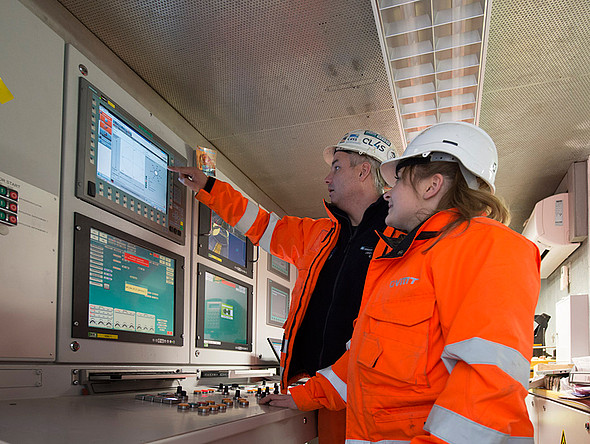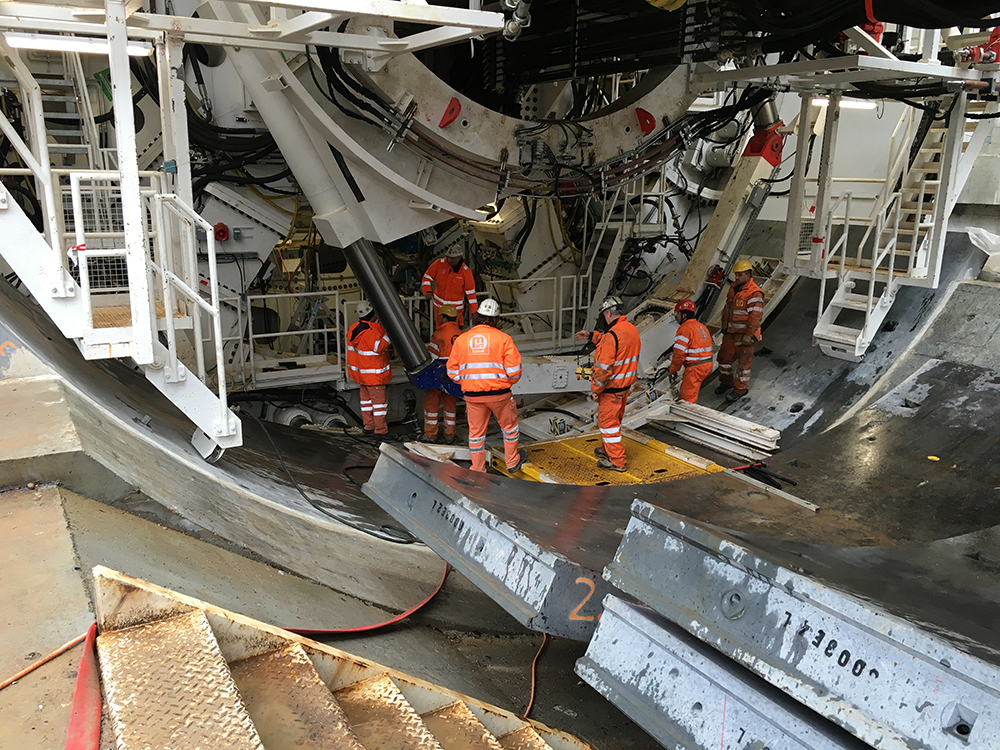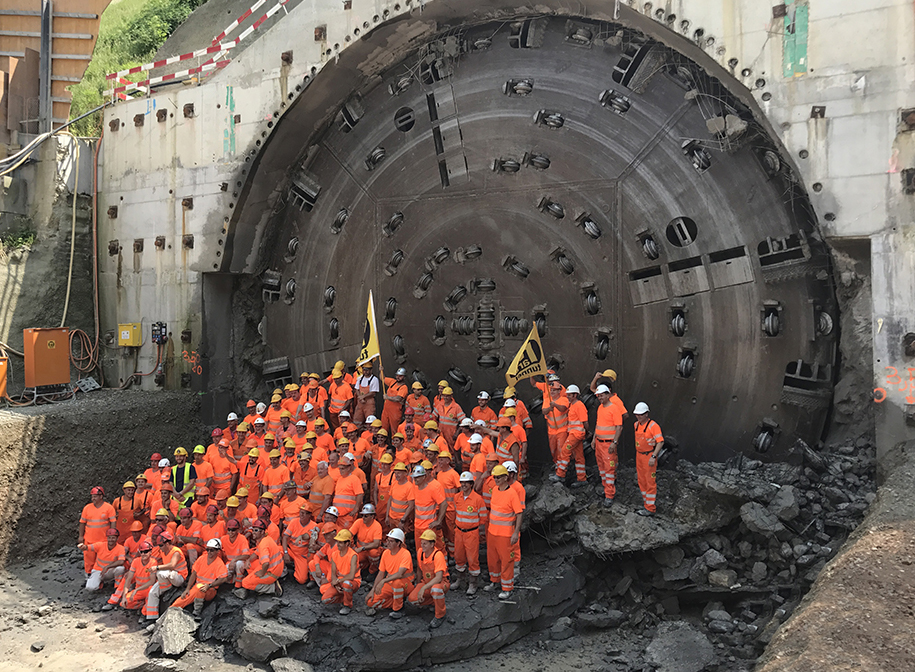Juli 2017
Bypass tunnel enables repairs to ground-affected 50 years old tunnel structure
On 21 June, 2017, at about 14.43, the final breakthrough was achieved on the Belchen Tunnel renovation project.
The Belchen tunnel runs along the A2, between Basel and Egerkingen in Switzerland and crosses the Juragebirge, a ridge that is interspersed with large amounts of gypsum. This has caused damage to the existing tunnel support structure due to ground swelling.
To alleviate the problem, a rehabilitation programme was developed for the two existing tunnels which date from 1970. To facilitate this work the new Belchen Restructuring Tunnel (STB) has been built as a relief road to minimise traffic restrictions associated with the renovation work on the existing tunnels. The construction process places high demands on the design, procedures, construction and maintenance of the north-south axis, which is important for traffic management.
 After preliminary works in 2015, the main tunnel works started in February 2016, using what is to date the largest tunnel boring machine (TBM) ever used in Switzerland. The large diameter tunnelling machine (LDT) was 13.97 m diameter and was required to complete some 3,177 m of tunnel. To add to the complexity of the tunnel, it was required to include a curve of 1,250 m minimum radius and a formwork carriage which was pulled in behind the TBM.
After preliminary works in 2015, the main tunnel works started in February 2016, using what is to date the largest tunnel boring machine (TBM) ever used in Switzerland. The large diameter tunnelling machine (LDT) was 13.97 m diameter and was required to complete some 3,177 m of tunnel. To add to the complexity of the tunnel, it was required to include a curve of 1,250 m minimum radius and a formwork carriage which was pulled in behind the TBM.
Overall the tunnelling work was a very complex logistical operation inside the tunnel which also included the utilisation of a multi-service vehicle (MSV). All the spoil produced during the tunnelling works was transported from the tunnel via a conveyor belt, supplied by Marti AG, directly to a landfill site located some 1.6 km from the tunnel portal.
 Maintenance of the correct tunnel alignment and level was therefore critical to the success of the operation, as was the correct installation of the tunnel lining ring segments. The contractor chose VMT systems to support these aspects of the work with the utilisation of TUnIS Navigation TBM Laser, TUnIS Ring Sequencing, Automatic Tailskin Clearance Measurement System SLuM Ultra which enhances the ring build process by measuring the ring position relative to tailskin axis of the TBM with millimetre-accuracy, TUnIS Navigation Office for the monitoring of the tunnel progress and IRIS.tunnel with a local server which offers a comprehensive data management and analysis tool for tunnelling machine data that then allows the TBM to be continuously adjusted and optimised to the prevailing geological conditions, all of which made the works compliant with EN 16191 standard.
Maintenance of the correct tunnel alignment and level was therefore critical to the success of the operation, as was the correct installation of the tunnel lining ring segments. The contractor chose VMT systems to support these aspects of the work with the utilisation of TUnIS Navigation TBM Laser, TUnIS Ring Sequencing, Automatic Tailskin Clearance Measurement System SLuM Ultra which enhances the ring build process by measuring the ring position relative to tailskin axis of the TBM with millimetre-accuracy, TUnIS Navigation Office for the monitoring of the tunnel progress and IRIS.tunnel with a local server which offers a comprehensive data management and analysis tool for tunnelling machine data that then allows the TBM to be continuously adjusted and optimised to the prevailing geological conditions, all of which made the works compliant with EN 16191 standard.
 After commissioning in 2021, the two existing 50 year old tunnels will be refurbished. Subsequently traffic will flow southwards through the renovated tunnel. After completion of the repair work, two tunnel tubes or four lanes will still be available for traffic.
After commissioning in 2021, the two existing 50 year old tunnels will be refurbished. Subsequently traffic will flow southwards through the renovated tunnel. After completion of the repair work, two tunnel tubes or four lanes will still be available for traffic.
The project is being undertaken by the Federal Roads Authority (ASTRA), Jürg Röthlisberger, the cantonal committees of the cantons of Basel-Landschaft and Solothurn.
